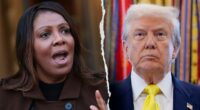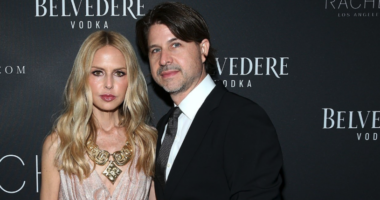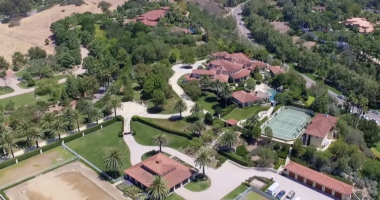Share this @internewscast.com
Contrary to popular belief, Apple Inc. was founded by THREE people. Not two. Most people assume Apple was co-founded by Steve Jobs and Steve Wozniak alone. But that’s not true! Apple had a third co-founder, who actually provided 100% of their early funding. That mystery co-founder is named Ronald Wayne. For his services back in 1976, Ronald was given 10% of Apple’s equity. So why haven’t you heard of him today? Why isn’t he revered in the halls of tech/wealth tracking immortality? Because 12 days after co-founding what would eventually grow into one of the most valuable companies of all time, Ronald made the not-so-brilliant decision to sell his entire stake back to Jobs and Woz for a total of $2,300.
It will likely go down as the worst business decision in history, especially when you consider the fact that his 10% stake would be worth $340 billion today. Even if Ronald had sold off 90% of his stake by now, his remaining 1% would still be worth $34 billion. And that’s not even counting the hundreds of additional billions he would have earned from dividends and the sale of his other shares over the years.
We’re bringing up Ronald Wayne’s story because it often sparks another question about Apple’s founders: Why was Steve Jobs “only” worth around $10 billion when he died??? And to make the story even more surprising, the bulk of that $10 billion didn’t actually come from Apple stock at all. How could the co-founder and visionary behind one of the most valuable companies in history end up with such a relatively modest fortune compared to what might be expected?

Justin Sullivan/Getty Images
Some Really Brief History
As we mentioned, Apple was founded in 1976, but it wasn’t until the early 1980s that the company really started to explode in the tech world. After a slow start, by 1982 Apple’s annual revenues surpassed $1 billion.
In 1983, Apple decided to hire a guy named John Sculley to be CEO. Sculley had previously served as CEO of Pepsi-Cola. He took the Apple job after Jobs pestered him with the question: “Do you want to spend the rest of your life selling sugared water, or do you want a chance to change the world?“
Jobs and Sculley got along very well at first. Together, they launched the Macintosh computer, which was introduced to the world with the now iconic Orwellian “1984” Super Bowl commercial. Unfortunately, the good times between Jobs and Sculley did not last.
By this point, Steve had become extremely abrasive to both his subordinates and fellow executives. Many employees at the time described Steve as being “erratic,” “temperamental,” “unreasonable,” and even simply, “a terrible manager.”
In response to a barrage of negative Jobs-related feedback, in April 1984, Apple’s board authorized Sculley to remove Steve from basically all day-to-day roles. Jobs was essentially relegated to a figurehead. Sculley actually thought Jobs would be in favor of this arrangement. He was not. Steve was furious and began secretly organizing a coup to oust Sculley from the company entirely. When Sculley learned of the coup, he successfully sought and received permission from Apple’s board to make Steve’s role one with no operational function whatsoever. Steve was all but banished from working on any Apple products.
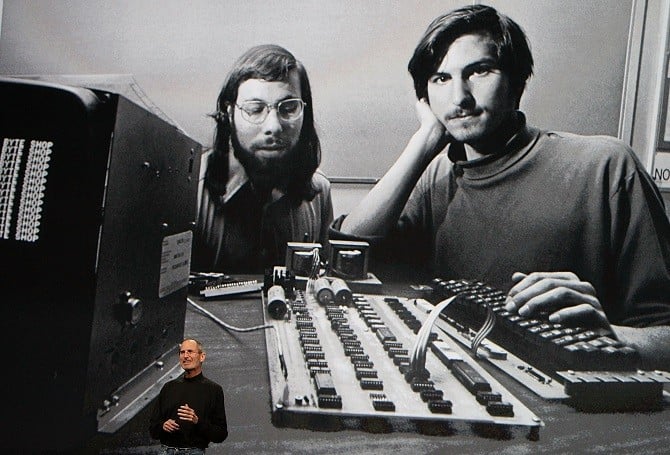
Justin Sullivan/Getty Images
Another major problem was that Apple was in a very bad spot in 1985. Their most recent products were complete failures, and the company’s stock was hitting all-time lows.
After his demotion, Steve eventually stopped coming in to work altogether. He then resigned from Apple entirely. He was not fired. He resigned. That point is often misremembered.
At the time of his resignation, Steve owned about 20% of Apple. Within days of leaving Apple, Steve angrily sold off 99.99999% of his Apple shares in one fell swoop. To be precise, he sold all but ONE share. He kept that last share only so he could continue receiving the company’s annual report. In total, the sale netted him around $100 million after taxes.
After jettisoning Jobs, Apple’s stock actually made a huge comeback over the next 12 months.
In that same period, Steve spent some time in Russia. He applied to fly on NASA’s Space Shuttle as a civilian astronaut. He dated Joan Baez and traveled around Europe and generally grappled with what to do with the rest of his life.
Oh, and did we mention that at the time this all went down, Steve was just 30 years old?
The NeXT Big Thing (Literally!)
Upon returning from Europe, Steve founded NeXT Inc. with $7 million of his own money. That $7 million personal investment eventually became $10 million. Then $15 million. Then $25 million. Within a year, NeXT (and Jobs) were almost completely out of money and had no product to show for their efforts. It was desperate times.
Steve navigated through these dire straits by taking on a major investment from Texas billionaire (and future Presidential candidate) Ross Perot. Mr. Perot’s lifeline allowed NeXT to press forward for the next few years. By 1994, NeXT finally posted its first annual profit, $1.03 million.
Meanwhile, Apple’s stock resurgence proved to be very temporary. So much so that in 1997, a small team of senior Apple execs wanted to find a way to bring Steve back in some capacity. So what did they do? They bought NeXT for $427 million in cash.
With this acquisition, Steve became a formal advisor at Apple, but he still did not own any shares of the company!
Returning to Apple
In September 1997, Steve was named interim CEO of Apple. Over the next few years, he fluctuated back and forth about how much he actually wanted to be involved at the company. When he finally decided that he did want to come back officially, he made a very big demand: He wanted to get PAID. After some lengthy and sometimes contentious negotiations, Apple awarded Steve with 5.5 million shares of Apple. In mid-1998, those shares were worth a split-adjusted $300 million.
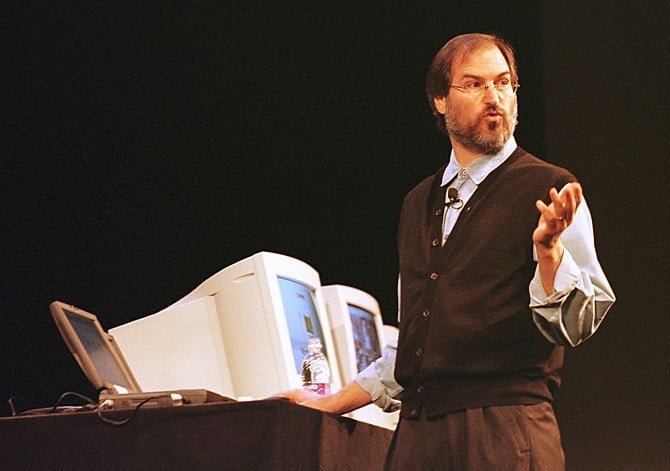
G. MABANGLO/AFP/Getty Images
The Graphics Group (Pixar)
Back when Steve left Apple, NeXT wasn’t his only investment. In 1986, he also spent $10 million of his own money to purchase a company called The Graphics Group from George Lucas. The Graphics Group was eventually renamed Pixar. Perhaps you’ve heard of it?
Like NeXT, Pixar also had some tough times in the late 80s/early 90s, but they struck gold with a little 1995 movie called “Toy Story.” Perhaps you’ve heard of it?
As you probably know by now, over the next 20 years, Pixar pumped out non-stop home runs. They went on to release “A Bug’s Life,” “Monsters, Inc.,” “Toy Story 2,” “Finding Nemo,” and “The Incredibles.” IN THAT ORDER!
Pixar IPOd on November 28, 1995. The initial offering price was $22 per share. By the end of the first day of trading, Pixar was trading at $39. Steve owned 30 million shares, equal to 78% of the company. At the end of the day, he was left with a net worth of $1.17 billion. This marked the first time Steve’s net worth was officially worth over one billion dollars. Not bad considering that just a few years earlier, he was not far away from being out of money!
Disney Acquisition
Having been Pixar’s distribution partner for many years, in 2006, Disney decided it wanted a more formal relationship. So they bought Steve’s company for $7.4 billion in Disney stock. The sale gave Steve 138 million shares of Disney, which had a market value at the time of $3.7 billion.
What Could Have Been…
Steve Jobs died on October 5, 2011. At the time of his death, he was worth $10.2 billion. Of that total, $8 billion came from his Disney stake, “only” around $2 billion came from Apple. In other words, Disney accounted for 78% of Steve’s net worth!
Steve’s widow, Laurene Powell Jobs, inherited the bulk of Steve’s estate, made up of roughly 130,181,925 shares of Disney (roughly 7% of the company) and 5.5 million shares in Apple. After a 7-1 stock split in 2014, her Apple stake became 38 million shares. After a 4-1 stock split in 2020, the stake would have grown to 154 million shares. Today, 154 million shares would be roughly 1.04% of the total company and would have a market value of around $35 billion. Her Disney stake would be worth around $15 billion, potentially giving her a net worth of $50 billion.
Unfortunately, Laurene has sold off most of her shares in both companies. She’s used her stock sales to build a multibillion-dollar portfolio that includes media, sports, philanthropy, and real estate investments. Today, Laurene Jobs has a net worth of $10 billion. That makes her one of the richest women in the world and roughly the 250th richest person overall, but she could have been worth $50 billion by just doing nothing.
Let’s pretend for a moment that Steve Jobs had never resigned from Apple back in 1985. If he had held on to his original 20% stake in the company, that ownership would translate into nearly 3 billion shares of Apple today. At Apple’s current market value, those shares would be worth around $680 billion, enough to make him the richest person on earth by a margin of roughly $300 billion. On top of that, the stake would generate about $3 billion per year in dividends alone, the kind of annual passive income that exceeds the entire market cap of many Fortune 500 companies.
Of course, there’s no guarantee Apple ever would have become the same trillion-dollar juggernaut if Steve hadn’t been forced into exile all those years ago. And if that exile hadn’t happened, the world might never have seen some of the extraordinary films that came out of his other venture, Pixar.
(function() {
var _fbq = window._fbq || (window._fbq = []);
if (!_fbq.loaded) {
var fbds = document.createElement(‘script’);
fbds.async = true;
fbds.src=”
var s = document.getElementsByTagName(‘script’)[0];
s.parentNode.insertBefore(fbds, s);
_fbq.loaded = true;
}
_fbq.push([‘addPixelId’, ‘1471602713096627’]);
})();
window._fbq = window._fbq || [];
window._fbq.push([‘track’, ‘PixelInitialized’, {}]);

